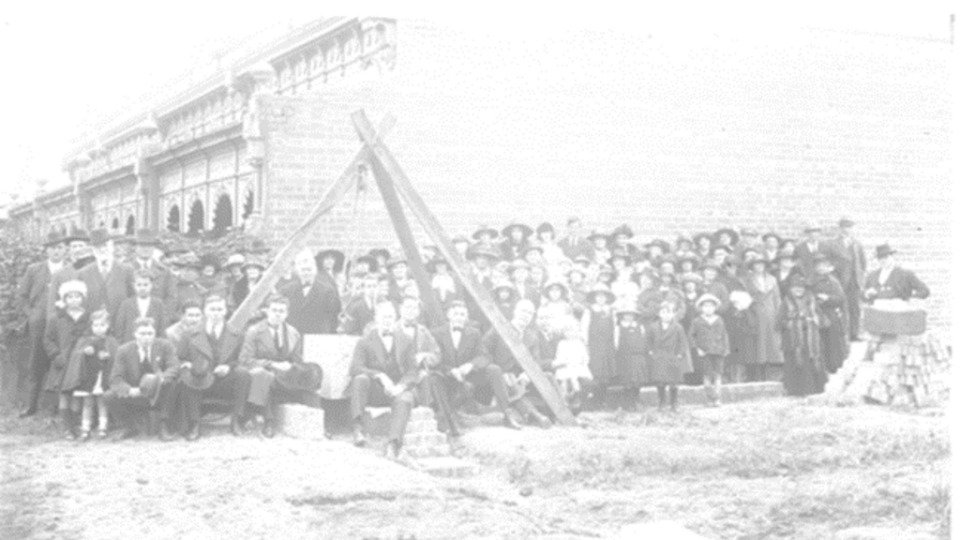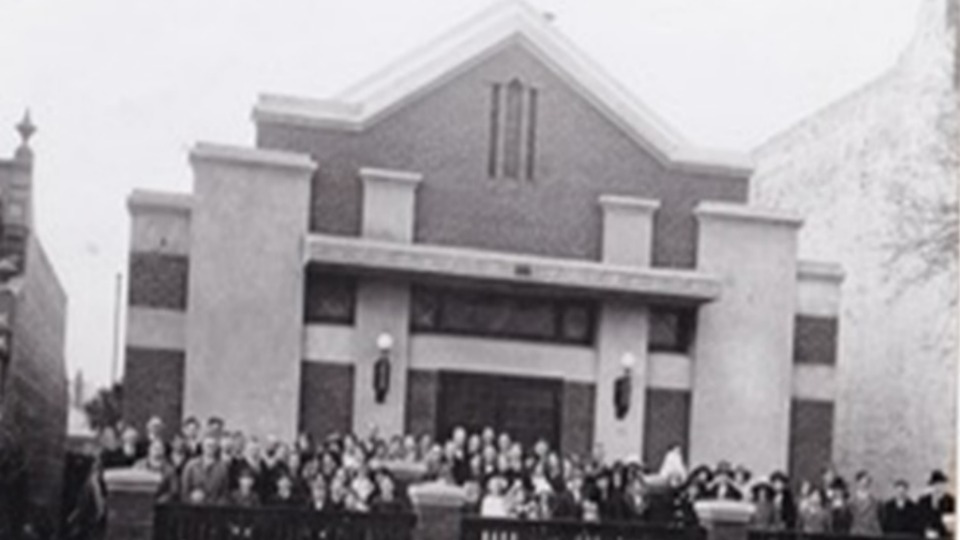The following article was written by Newsroom contributors, Ian and Di Davenport, in consultation with Dr Lindsay Opie.
The transformation of the Latter-day Saint community in Victoria from being dependent on Utah missionaries and meeting in homes and rented halls to relying on a stable community of local churchgoers happened around the building of the first chapel in Melbourne, Victoria in 1922 and the subsequent church marriages and sociality which followed.
During the nineteenth century two small chapels, one located on the goldfields of Castlemaine and the other among the farms of North Scoresby, served two congregations of Victorian Saints for short periods of time. Both buildings were donated to the Church but returned to local communities once church members left the area or emigrated to Utah, as was the custom of the times.
The first officially recognised chapel in Victoria was located at 52 Albert Street, East Melbourne. Building commenced in May 1922 and the chapel was dedicated by the mission president, Don Carlos Rushton, on Sunday 13th August 1922. Prior to this, church meetings were held in homes and rented halls.

Laying the foundation stone for the East Melbourne Chapel, 13 May 1922.
Laying the foundation stone for the East Melbourne Chapel, 13 May 1922.© 2022 by Intellectual Reserve, Inc. All rights reserved.The red brick building was principally constructed by local members who were experienced in construction work.
The idea of building the chapel belongs to Elder Calvin Robbins, a young Utah missionary presiding over the Church in Victoria in 1918 and 1919. Elder Robbins and his friend Elder Clarence Tingey, presiding elder of the Church in Queensland, felt that the Church in Australia needed to build chapels if it was to grow. Queensland already had one chapel built by members.
In late 1919, Elder Robbins organised a fund-raising event for the building fund. Shortly thereafter the building fund committee was organised with the Mission President, Ray Kneale, Arthur Butler, and Ernest Burness as members. However, even though members would raise funds to buy the land and a neighbouring house for the missionaries to live in, it was clear that the local church members would need financial assistance to build a chapel.

Calvin Robbins (1892-1987).
Calvin Bicknell Robbins (1892-1987).© 2022 by Intellectual Reserve, Inc. All rights reserved.Upon their return to Salt Lake City, Elder Robbins and Elder Tingey met with the First Presidency. At the time, Elder Tingey’s mother, Martha Tingey, was serving as General Young Women President of the Church, an organisation for teenage girls.
Elder Tingey reported on the meeting as follows: "We said to the Presidency that we felt that the mission was moving along far enough where more Church owned buildings could be had (there was one Church building in Brisbane). President Grant said, 'Well now, brethren, how much would you need to get something for the folks to meet in properly?' We said, 'Well if we could have $10,000 a building.' President Grant said, 'If you could build meeting houses for $10,000 you go ahead and build them.'"
This was the beginning of the Church's building program in Australia. It started with vision and courage – the values with which we have built the Church ever since.
One year after the dedication of the East Melbourne chapel, the Victorian government declared the Church a religious denomination for the purposes of the Marriage Act. This recognition enabled ministers of the Church to solemnize marriages. On the 17th October 1923, Louis Paul Kneale and his bride, Elizabeth Sarah Darker Smith, were married by Elder Joseph Baxter Gunnell, president of the Melbourne branch – the first church marriage in Australia.
Relief Society had been organised in 1921; sisters worked with missionaries and men of the branch in building the chapel. Sister Galloway, a 73-year-old, would take food to the building site from Hawthorn to East Melbourne.
The building and dedication of the East Melbourne chapel changed the way the public and media viewed members of the Church.

East Melbourne Chapel of The Church of Jesus Christ of Latter-day Saints. Dedication 13 August 1922.
East Melbourne Chapel of The Church of Jesus Christ of Latter-day Saints. Dedication 13 August 1922.© 2022 by Intellectual Reserve, Inc. All rights reserved.We honour the men and women and children who sacrificed and built many of these chapels. In the period 1957 to 1970, the number of chapels increased from one to 12. The East Melbourne chapel was no longer used; rather, larger buildings were needed to be home to bigger congregations and communities.
Today there are 41chapels hosting 66 Latter-day Saint communities.
- Emma-Galloway-brings-food-and-drinks-to-builders.-Melbourne,-1922.
- Builders-work-on-construction-of-the-East-Melbourne-Chapel-of-The-Church-of-Jesus-Christ-of-Latter-day-Saints,-1922.
| Temple Square is always beautiful in the springtime. Gardeners work to prepare the ground for General Conference. © 2012 Intellectual Reserve, Inc. All rights reserved. | 1 / 2 |